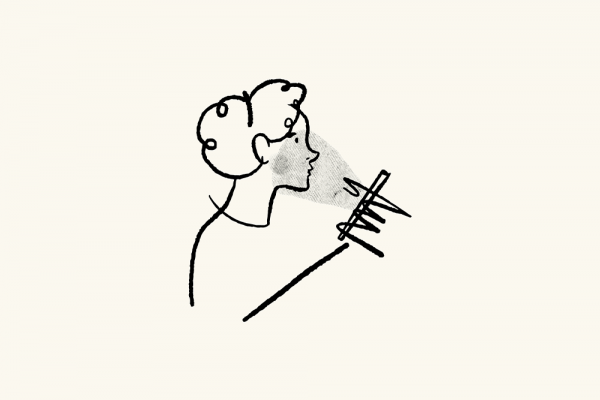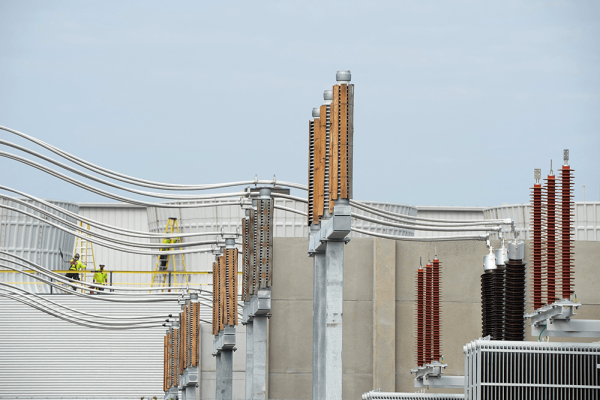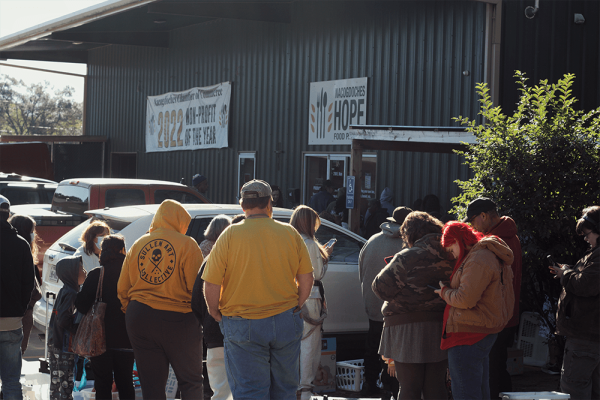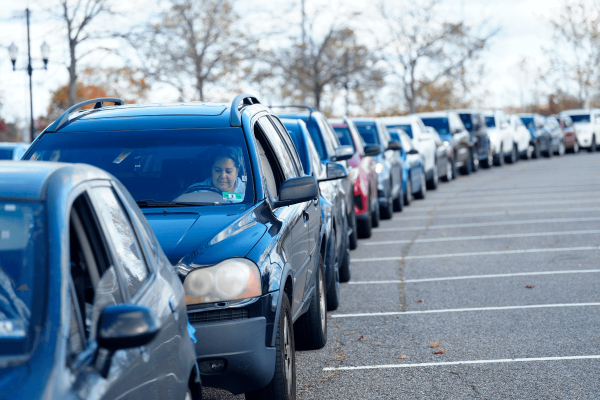Like any other Gen Zer, I’ve grown up hearing about the potential harms of social media: As early as elementary school, teachers and parents warned us of stranger danger, not just in the grocery store, but also online. I was 12 when I got my first social media account on Instagram (even though my hand-me-down iPod Touch didn’t have a camera). In seventh grade, I, and many of my classmates, wrote our final essays for English class on the influence of social media on teenage girls’ body image. I was in junior high when news broke that Facebook user data had been improperly harvested to manipulate U.S. voters. In my high school’s speech and debate club, I learned about dangers of doxxing — posting people’s personal information, like addresses, online as a way to target them for violence. And in my own work here at Sojourners, I regularly see the hate and homophobia that shows up in social media comments.
Which is to say: I know tech companies, their CEOs, and their algorithms are not meant to promote human flourishing; they are created to be addictive and incite inflammatory interactions — all to drive profit.
And yet, I still believe social media is an essential tool in pursuing social justice.
Social media played an influential role in my own political and theological development. I grew up in a small, predominantly white, Christian town. My first memorable exposure to diverse voices and experiences was through Instagram where I read stories of harmful things Christians said to queer people and the negative impacts of short-term mission trips (both things I was actively participating in at the time). Social media helped me begin to believe that maybe the way my church was teaching about LGBTQ+ issues was hurting more than helping. Through social media, I learned Jesus was not white. In the summer of 2020, TikTok videos from anti-racist advocates and public health officials helped me feel connected to justice movements across the country, teaching me more about U.S. history than I had ever learned in high school.
When I think about the role of social media in my life, I think about what pastor Michael Woolf wrote for Sojourners: “[O]perating a social media account is a lot like trying to do good in a flawed world. If you isolate yourself from the world, you can trick yourself into believing that you remain ‘pure’ from the world’s sin. But remaining ‘pure’ from the sin of the world by opting for an isolationist approach only guarantees that you ignore the world’s problems instead of working to solve them.”
My perpetual question is: How can I do good in systems that seem very, very bad? I don’t think I’ll ever get a personal audience with Mark Zuckerberg, but I do have a few suggestions for how we can use social media for good in a time when it seems very, very bad.
1. Follow people who challenge you.
By “challenge you,” I don’t mean your conservative family members who post hateful rhetoric online that makes you want to be aggressive right back. When we engage with people on social media whose lived experiences are much different than our own, we remember that we do not all exist in the world the same way. Echo chambers, which occur when you are constantly hearing the same kind of information from the same people, can contribute to misinformation. Algorithms are created to show you similar content to what you’ve already interacted with, which can limit the content you’re seeing. They can also suppress content that appears to be political.
For example, creators on TikTok often use the watermelon (a long-time symbol of Palestinian solidarity) emoji in place of writing “Palestine” to combat the algorithm. All it takes to outsmart your algorithm so that you can expand your learning circle is this: Pay attention to what content you’re engaging with (watching, reading, sharing, liking, commenting). It’s tempting to get comfortable with content that’s familiar, but I’ve learned so much about racial, gender, and economic justice from social media creators who take the time to create content that is meant to inform, challenge, and engage.
2. Support independent media.
Social media platforms are a prominent place many Americans get their news; according to a report from the Pew Research Center, half of Americans sometimes or often get their news from social media. And while social media does come along with its own forms of bias and misinformation, it can also be a place to find independent journalists and voices who aren’t regularly included in other forms of media, especially establishment media whose content is often controlled by large corporations — like your morning news show. For example, social media has been an important way for journalists to report on Israeli attacks in Gaza. Palestinian journalists such as Bisan Owda (wizard_bisan1) and Motaz Azaiza (motaz_azaiza) are based in Gaza and use their social media accounts to report on Israeli violence in Gaza and to humanize the stories of displaced families. As Crystal Silva-McCormick writes for Sojourners, “It’s likely that the world would have no clue about the sheer violence unleashed on Gaza without these journalists’ reporting because Israel will not allow international journalists to report without first vetting their material.”
When looking for independent media producers, remember that the more local, the better. Try to support organizations that are spreading the word about events and legislation happening in your local community. Additionally, check out places like Ground News, a news aggregator that addresses media bias by tracking blind spots from news organizations that are influenced by government or corporate interests. Stay away from people who are sharing reactionary stories, but don’t shy away from firsthand accounts that may put forth a different perspective than you’re seeing on the nightly news. Try to verify what you find with outlets like Reuters and the Associated Press.
3. Challenge the narrative that “social media is not all that social.”
If I had a dollar for every time someone made this comment to me, I’d have a lot of dollars. Part of my job as the social media assistant at Sojourners is to moderate comments on our social media pages, so I’ve witnessed my fair share of ignorant, harmful comments. But I’ve also witnessed people connecting over shared experiences or a book they both read.
True, social media isn’t a substitute for in-person social interactions, but social media can be a map to find where we can go to meet people. Chances are, there’s an Instagram account for your niche interest that hosts monthly meetups, like bike groups, public gardens, book clubs, or knitting clubs, or queer Bible studies. In this way, social media is social because it serves as a good old-fashioned bulletin board, with informative posts of events happening in your community. Social media also allows us to stay connected to old friends and meet new ones who may live far away from us. Without Facebook, my grandma in South Dakota would’ve been hard-pressed to reconnect with her high school classmates in New York. Additionally, young LGBTQ+ people often report feeling safe and understood in online spaces, which is especially important for those existing in hostile environments at home and at school. Finding each other online helps us find each other in person.
4. Take breaks.
There are often days when I think to myself, “Why in the world did I sign up to doomscroll for my job?” There are days when I wish I could retreat to a corner of the world and not have to see another terrible tweet on X. But at the end of the day, I do believe in the power of using social media for good. Even when we try to use social media for justice, it means we will have to get into the nitty-gritty bits of injustice. As with any justice work, it is important we feel centered in ourselves before we try to do good for others. It’s OK and good and right to take breaks when we need to. Whether your break is an hour, a weekend, or a whole Lent-inspired 40 days, do what works best for you. Find an accountability partner to take a detox with you.
5. Stay present in your non-digital life.
While I believe all the things I’ve written above, I also believe that digital activism can sometimes contribute to missing out on what’s happening right in front of us — within our families, our neighborhoods, and ourselves. Being present could mean joining your neighborhood’s Buy Nothing or mutual aid group or taking the time to linger at your local farmer’s market on a Saturday morning. Volunteer with your church or school. Sometimes, there are natural ways to combine your neighborhood activism with digital activism, like Woolf, whose church used its Facebook account to spread the word about protests. The key is to not overlook where your own two feet are standing while your thumbs are scrolling. Like any meaningful activities in our lives, it’s important to have a mindset of moderation, to take time to step back and reassess how being on social media makes us feel and what our goals are for participating in it.
As Mayowa Aina reports for NPR, “if we’re going to have a healthier relationship with social media, we’ve got to stop thinking of it as a mindless activity and start thinking of it as a meaningful one with the potential to reveal certain truths about ourselves.” It’s time that social media users deepen the conversation around our digital lives: Instead of just focusing on limiting our use of social media, let’s think critically about how we can harness it's potential for good.
“I don’t think I’ll ever get a personal audience with Mark Zuckerberg, but I do have a few suggestions for how we can use social media for good in a time when it seems very, very bad.” — Lexi Schnaser
Got something to say about what you're reading? We value your feedback!






